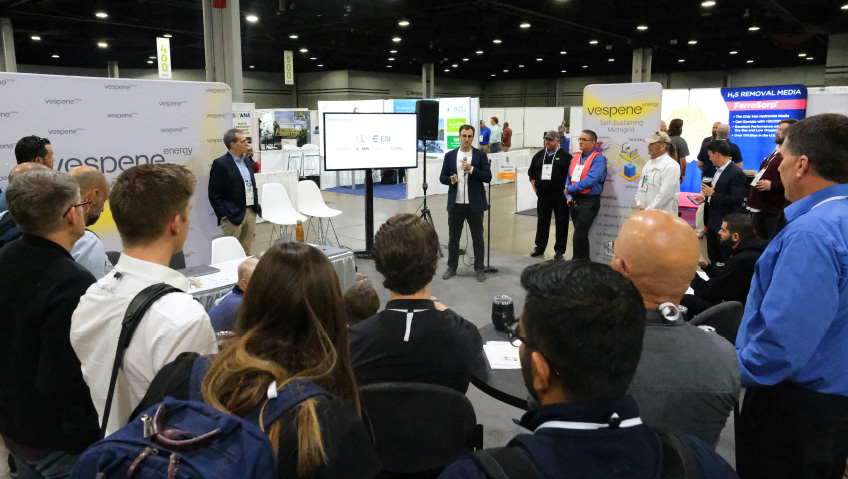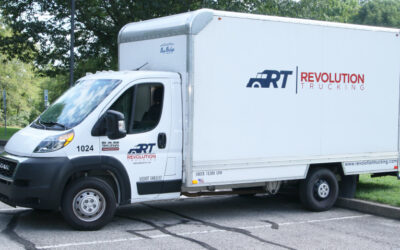The mission of The Solid Waste Association of North America (SWANA) is to advance the responsible management of solid waste, with the goal of transitioning waste management to resource management through a shared emphasis on education, advocacy, safety, and research. The largest member-based solid waste association in the world, SWANA has thousands of members and 47 chapters throughout the United States, Canada, and the Caribbean.
After profiling SWANA in 2022, we checked back in to hear the association’s objectives for the coming year.
Improving safety
“Safety is a very important part of our organization,” says Executive Director and CEO Amy Lestition Burke, MA, FASAE, CAE. “Collecting waste is one of the more dangerous jobs in the United States.” The first goal of the strategic plan for 2024 is to “get off the top 10 list of most dangerous jobs.”
SWANA promotes safety via training, conferences, and safety ambassadors, who promote safety at the chapter level. The association keeps its members updated throughout the year on safety records and what SWANA is actively doing to improve those statistics. Specific programs include Slow Down to Get Around, to help lessen the danger that solid waste professionals face when their trucks are stopped along the road. The team is also looking into the latest safety-related technology found in Materials Recovery Facilities (MRFs) and how to expand its use.
Safety around specific items is another emphasis for the organization. “A special focus is going to be on the management of lithium-ion batteries,” says Director of Applied Research, Jeremy O’Brien. “These batteries are showing up at all of our different types of facilities—our recycling facilities, our transfer stations, and our landfills—and they’re causing significant fire hazards.”
One of SWANA’s research projects for 2024 focuses on battery collection practices and disposal technologies. The association has submitted a grant application, along with the Institute of Scrap Recycling Industries, to the Department of Energy to improve education associated with the recycling and management of all types of batteries. “We look forward to working with other organizations to make consumers aware of the risks,” says O’Brien. “It’s a huge societal issue; these batteries are everywhere.” The fires they cause occur with alarming frequency—“on a weekly basis at certain types of facilities.”
PFAS (per- and polyfluorinated alkyl substances), often referred to as forever chemicals, are another safety focus for 2024. “They’re in clothing and makeup and food packaging and mattresses and carpets,” says O’Brien. Indeed, they have become so ubiquitous that they are now even found inside our bodies. “Pretty much every human on earth has a small amount of PFAS in the blood because these chemicals are everywhere. They’re called forever chemicals because they have very strong chemical bonds that are hard to break.”
Leachate, the liquid that drains from landfills, is known to contain a certain amount of pollution. “And lately, we’ve found that it also contains PFAS.” SWANA is learning more about the risk in order to mitigate it.
Protecting the planet
“The second goal is to become climate champions,” O’Brien says. “Climate change is a big concern for our entire world and so we want to play the role that we can best play in addressing that issue. And in many cases, the solid waste management managers can address climate change by increasing the amount of materials that are recycled at our facilities, and that goes along with our general goal to become resource managers instead of waste managers. So, we hope to improve our recycling systems.”
For this to happen, SWANA will need to help reduce the amount of non-recyclable material that is sent to recycling facilities. “One of the things that is plaguing our materials recovery facilities is the amount of contamination that’s in the recycling mix that we process at our MRFs,” he says. “That’s a real issue for our industry because we have to pull all those contaminants out and then basically transport them to the nearest landfill for disposal. So, it’s extra cost, extra work, and that can also create safety hazards.”
This problem is often caused by “wishful recycling,” in which consumers include items in the recycling bin that they incorrectly believe are recyclable. “People say, ‘well, this thing should be recycling, or it’s got a recycling symbol on it, so I’m going to throw it in the bin,’” O’Brien says. “Our goal is to improve [the situation], mostly through education and examining the recyclables that are put out at the curb, to make sure that they only contain the recyclables that the materials recovery facilities are designed to process.”
Food waste is another focus area. “In the U.S. right now, there’s a big emphasis on diverting food waste from landfills and collecting it at the source, and then processing it outside of the landfills,” O’Brien says. “There’s a concern that by continuing to landfill food waste, we may be contributing to methane emissions and so we want to make sure that’s addressed and if it’s called for, to implement food waste diversion programs where we can collect the food waste separately and then we process them in what you call a mechanical anaerobic digestion system. And then you can collect 100 percent of the gas and you can also produce compost from food waste. So I think in 2024, there is going be a lot of interest in those types of systems.”
Reframing public perception
“We hope that we can reframe the perception of the industry… this is really a strong industry that provides many benefits that other industries don’t,” O’Brien says. “Our industry may not always get the respect it deserves, but we provide essential services that every community needs and we want to improve the perception of what we do.”
This message will resonate with younger generations. “People are looking for their jobs to have more impact and meaning, to not just be sitting at a desk pushing paper or being a cog in a wheel. Employees want to see the positive impact of their work… Every community needs to have their waste managed responsibly and economically in an environmentally sound manner. Those are all really noble purposes for a career.” SWANA wants to “educate the public and potential employees about how important their jobs could be and how they relate, not only to the benefit of the public health and community, but also to the global environment, as well as the regional and local environments,” says O’Brien.
“It’s a purposeful and much needed type of work,” he continues. “It’s not just digging a hole and putting trash in it and burying it. Our systems are very sophisticated and now our landfills are very highly regulated.” These modern landfills are multimillion-dollar facilities carefully designed to minimize environmental impact using the latest, most advanced methods.
It is particularly important to attract truck drivers to the industry. To accomplish this goal, SWANA is working hard to spread awareness that “it’s an industry where you can get home every night. You know you don’t have to go on cross-country routes. You can serve in a local community and spend your nights at home with your family. Generally, you don’t have to work on weekends. So, it’s a great type of truck driver position if you value those things.”
Strengthening the infrastructure
The team wants to ensure that SWANA maintains “the good institutional infrastructure needed to lead our members as we progress in the 21st century.” This includes a continued emphasis on presenting top-notch conferences and learning and development trainings, which is especially important to support the organization financially.
“By bringing together diverse perspectives, we will find and present innovative ideas, big and small, to make the most impact on our strategic initiatives. We will go the distance to serve our communities across North America, Canada, the Caribbean, and beyond, creating a valued experience through our education, events, advocacy, research, and initiatives,” Lestition Burke says. “To deliver, we are strengthening SWANA by enhancing technology, ensuring greater efficiencies through automation, and by developing a culture of flexibility and agility, positioning SWANA to be the central hub for the solid waste and resource management profession.”
With so many clear objectives for 2024, SWANA has a clear roadmap for moving the industry forward. After representing solid waste professionals for over 60 years, the association remains as relevant as ever.













